Recognition and History
| 2015 | |
|---|---|
 UCSF is re-accredited by the ACR |
|
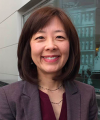 Dr. Catherine Park is named Chair of the department. |
|
| New hospital opens at Mission Bay, where our department has one Linac and one HDR suite. Parnassus retains two Linacs and one Gamma Knife. Mt. Zion retains two Linacs, one TomoTherapy, one Hyperthermia suite, one HDR suite and one CyberKnife. |
|
| 2012 | |
| Dr. Mack Roach is appointed by the White House as a member of the National Cancer Advisory Board. | |
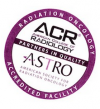 UCSF Radiation Oncology is awarded the ACR & ASTRO Accreditations. |
|
| 2010 | |
 Dr. Dave Larson receives the ASTRO Gold Medal. |
|
| 2009 | |
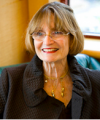 Dr. Jeanne Quivey is named Endowed Chair of Head and Neck Radiation Oncology by Irwin Mark Jacobs and Joan Klein Jacobs. |
|
| 2008 | |
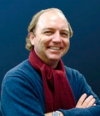 After a national search, Dr. Jean Pouliot is named Director of the Physics division. |
|
| New Imaging Beam Line for MV Cone Beam CT. | |
| 2005 | |
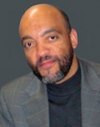 Dr. Mack Roach is named Chair of the department. |
|
| MV Cone Beam CT developed and introduced in clinic. | |
| 2003 | |
| UCSF makes history with first patient ever imaged with MV Cone BeamCT. | |
| CyberKnife program begins. | |
| UCSF makes history with first patient ever imaged with MV Cone BeamCT. | |
| 2001 | |
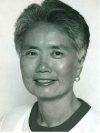 Dr. Karen Fu of UCSF Radiation Oncology receives the ASTRO Gold Medal. |
|
| Online positioning with gold markers for prostate cancer patients begins. | |
| Clinical use of Magentic Resonance Spectroscopic Imaging (MRSI) begins at UCSF. | |
| 2000 | |
| New UCSF Cancer Center opens. UCSF Radiation Oncology at the Cancer Center has four dual energy Linacs, CT, simulator and HDR suite. UCSF Radiation Oncology at Parnassus retains two Linacs and one Gamma Knife. Bill Wara named as permanent chair. |
|
| Brachytherapy Inverse Planning (IPSA) developed and introduced in clinic at UCSF. | |
| Dr. Dave Larson is named President of ASTRO. | |
| 1999 | |
| UCSF Mount Zion Comprehensive Cancer Center receives designation by the National Cancer Institute. | |
| 1998 | |
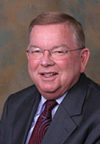 Dr. Bill Wara becomes acting chair. |
|
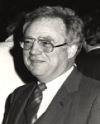 Dr. William C. Dewey of UCSF receives the ASTRO Gold Medal. |
|
| 1997 | |
| Mobetron IORT clinical use begins. | |
| 1996 | |
| Permanent Prostate Implant (PPI) program begins. | |
| Construction begins on a new Cancer Center at Mount Zion. | |
| 1995 | |
| IMRT Inverse Planning program begins. | |
| 1994 | |
| Proton eye program opens at Crocker Lab at University of California, Davis. | |
| 1993 | |
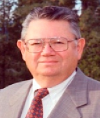 Dr. Theodore Philips of UCSF receives the ASTRO Gold Medal. |
|
| Dr. Dave Larson starts the SBRT program at UCSF four years before any other institutions in the US. | |
| 1992 | |
| Bevalac closed and particle program ends at Lawrence Berkeley National Laboratory. | |
| 1991 | |
| First Gamma Knife in Northern California. | |
| CT scanner installed at UCSF Long hospital. IMRT development begins with a collaboration with Nomos. UCSF opens new Radiation Oncology Department at new University of California Davis cancer center. | |
| 1990 | |
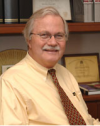 Dr. Lynn Verhey is recruited to head the Physics Division at UCSF. |
|
| Gamma Knife installed at UCSF. | |
| 1985 | |
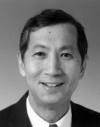 Dr. Cliff Ling is recruited to head the Physics Division. |
|
| 1984 | |
| The Department begins a focused effort to develop as many new modalities as possible in order to offer treatments not available in private practice, and to advance the field. These include: radiosurgery (1988), hyperthermia, 3D planning, isotopic immunotherapy, intraoperative radiotherapy (IORT) and 3DCRT. |
|
| Ted Philips is name President of ASTRO. | |
| 1983 | |
| The new department opens with a 20, a 6, and a 4 MeV linear accelerator, a cobalt machine, and 2 simulators. | |
| 1982 | |
| The new research labs, RORL, open at UCSF Mission Center Building (MCB). Bill Dewey is recruited to head them. | |
| 1980 | |
| The new Long Hospital at Parnassus with a new Radiation Oncology Department enters service at UCSF. | |
| 1978 | |
 Dr. Franz Buschke of UCSF receives the ASTRO Gold Medal. |
|
| Radiation Oncology becomes a full separate department of UCSF Medical School. | |
| 1978 | |
| Dr. Joe Castro becomes full time at Lawrence Berkeley Laboratory, Dr. Larry Margolis takes assumes leadership at UCSF Mount Zion. Particle program is expanded, supported by a PPG. Neon and carbon added at the Bevalac. Hyperthermia is underway at Mount Zion. |
|
| 1975 | |
| UCSF becomes active in the Radiation Therapy Oncology Group and begins a sensitizer research program. The Northern California Cancer Program is begun along with the Northern California Oncology Group. Headed by Dr. Steve Carter, UCSF Radiation Oncology is an active leader in this organization. |
|
| 1974 | |
| UCSF Radiation Oncology becomes a Division of Radiology with a separate hospital budget. | |
| 1973 | |
| Lawrence Berkeley National Laboratory asks UCSF to become involved in heavy particle research using helium ions. After biology and physics research and development, the treatment of ocular melanoma begins in 1977. | |
| 1971 | |
| Dr. Jerry Vaeth leaves UCSF Mount Zion and the hospital asks Dean Krevans for help. He requests the Radiation Oncology section to staff Mount Zion. This is accomplished, and the Tricenter is born. Equipment includes a betatron with electrons. Joe Castro becomes chief. For several years the residency program there remains separate. Radiobiology labs are located at Mount Zion. |
|
| 1970 | |
| Franklin Hospital (Ralph K. Davies) asks Radiation Oncology at UCSF to staff their new Radiation Oncology unit with a cobalt and a 4 MeV Linac. It becomes an integral part of the department, including residents. | |
| 1970 | |
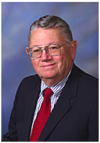 Dr. Buschke retires as chief of therapy and Dr. Ted Phillips is made chief. |
|
| The 1 MeV machine is replaced by a Clinac 4, #007, licensed to cure. With RMP funding, the Moffitt department is enlarged into nuclear medicine space; nuclear medicine is moved elsewhere. Soon afterward, a simulator is installed. Custom block cutting is introduced. |
|
| 1969 | |
| Ted Phillips spends a 6 month sabbatical at Stanford. | |
| 1968 | |
| The first treatment planning computer is installed at UCSF and Vernon Smith begins to develop and improve it. | |
| 1965 | |
| Dr. Jerry Vaeth leaves to start the Tumor Institute at Mount Zion. Dr. Ted Phillips is recruited to replace him. Phillips had been researching radiobiology in the Navy at Hunter’s Point. | |
| 1963 | |
| Dr. Ted Purcell and Dr. Ted Phillips, the first clinicians dedicated exclusively to Radiation Oncology at UCSF, finish their training. | |
| 1962 | |
 Dr. Stone retires and Alex Margulis is recruited to Chair Radiology. |
|
| The synchrotron project is completed. Results are similar to those with 22 MeV betatrons and the 70 kVp is deemed too expensive to justify. The facility is converted to the Laboratory of Radiobiology and Dr. Harvey Patt, Dr. Sheldon Wolff and Dr. James Cleaver recruited to staff it. |
|
| 1960 | |
| The 400 kVp machine is replaced by a rotational Theratron F cobalt machine. | |
| 1956 | |
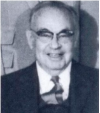 Dr. J. Franz Buschke is recruited from the Swedish Hospital in Seattle to head the therapy section at UCSF. He had pioneered supervoltage radiotherapy after joining the Swedish Hospital. |
|
| 1955 | |
| The Radiology department moves from the old UC hospital to UCSF Moffitt Hospital, third floor. The therapy unit has a 1 million volt GE resonant transformer and a 400 and a 250 kVp x-ray machine. This same year, Dr. Low-Beer dies of leukemia. |
|
| 1946 | |
| Dr. Stone returns, and in a Janeway lecture describes the serious complications seen with neutron therapy. Based on this, he concludes that very low LET would be better and secures funding from the AEC to build a 70 MeV electron synchrotron. This is built by GE and begins to treat patients in 1955. As part of the project he hires three physicists; Gail Adams, Garret Holt and Mary Lou Merck, who also staff the therapy section. Radiobiology is staffed by Dr. Henry Kohn and Dr. Bob Kallman among others. |
|
| 1942 | |
| The cyclotron is used for Manhattan project work and Dr. Stone becomes head of the radiation safety aspects of the Manhattan Project. Many UCSF faculty leave to serve in the armed forces. | |
| 1941 | |
| B.V.A. Low-Beer, a Czech radiologist, is recruited to head the therapy section. in Radiology. He is interested in radioisotope therapy, as he came from the Crocker Lab at Berkeley where he worked on isotopes. He is also interested in Head and Neck therapy. |
|
| 1938 | |
| Dr. Stone begins to work with Dr. John Lawrence on the use of neutron beams created in the 30 inch cyclotron to treat cancer. After 35 patients the project is switched to the 60 inch cyclotron and a total of 250 patients are treated, ending in 1942. |
|
| 1935 | |
| Dr. Stone works with the Lawrence brothers and other physicists to design and build an 800 kVp x-ray machine at the Crocker Lab in Berkeley and install it in the Radiology Department in the old UC Hospital at UCSF. It is one of the first megavoltage units in the United States. Equipment at that time consists of this machine, a 200 kVp machine and radium. |
|
| 1928 | |
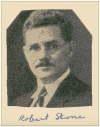 Dr. Robert Stone, MD is recruited to head the new Division of Radiology in the Surgery Department at UCSF. He was trained in Canada and had an interest in therapy and diagnostics. As the former chair of radiology at the San Francisco Medical School , he served on the Manhattan Project throughout the war years and was well-placed to direct research funding from the Atomic Energy Commission (AEC) to the San |
|
